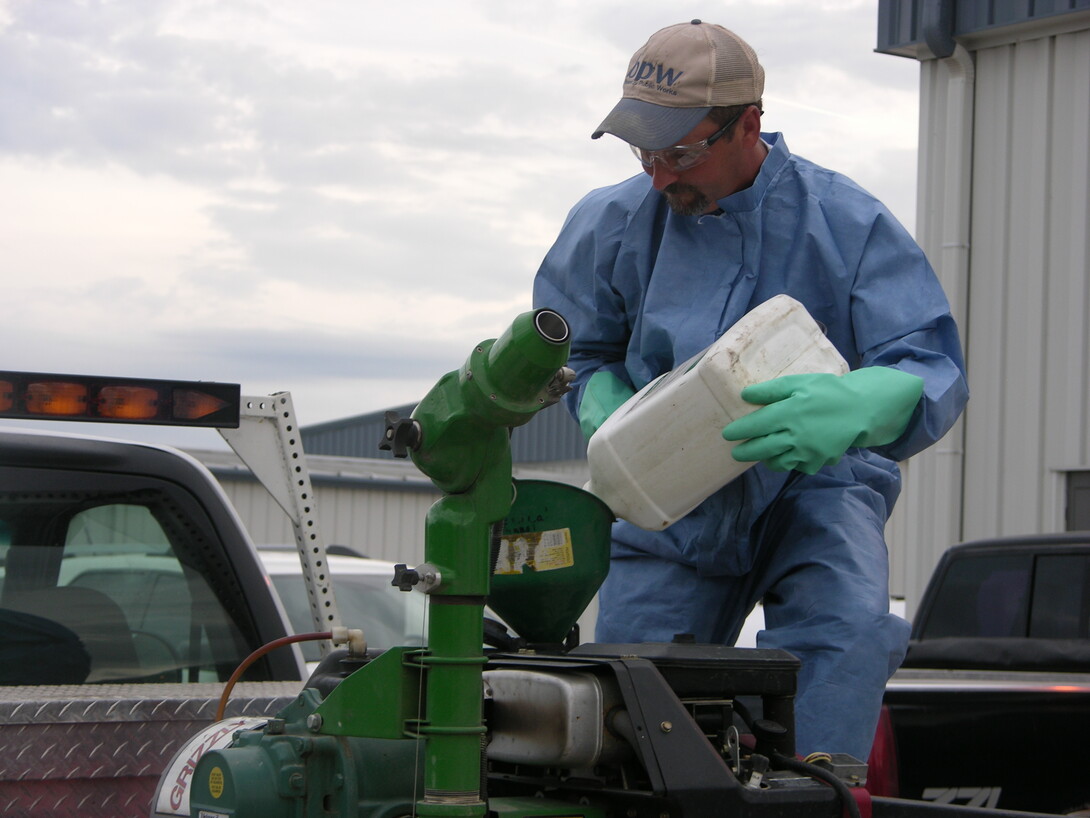
March 21, 2017
Lincoln, Neb. — Personal protective equipment (PPE) is a real safety net to protecting your nose, throat, skin, eyes and lungs from pesticides, said a Nebraska Extension educator.
Clyde Ogg said at minimum, PPE is gloves, long pants, long-sleeved shirt, shoes and socks. PPE may also call for goggles or face shield, respirator and chemical-resistant apron.
The PPE to wear for each product and situation is stated on the pesticide label. The label also includes first aid, entry restrictions, directions for use, protecting others and protecting the environment.
Ongoing research can reveal new health effects from pesticide products, and those health effects are reflected in new handling and PPE requirements, Ogg said.
“These are real hazards so it really is important to pay attention,” he said.
Even if using products you’ve used before, read the labels each time you buy them.
“Formulation type, application equipment type and other factors may change – even within a season -- and therefore affect the recommended PPE,” Ogg added.
Read the labels even for the same brand of different pesticides. A liquid formulation and a dry formulation may require different PPE. And, a liquid formulation may require a different PPE when applied with a handheld vs a mechanized sprayer. PPE may differ depending on who is handling the product. The sample label for mixer-loaders, for example, states to wear a face shield, chemical-resistant apron, unlined chemical-resistant gloves, protective eyeware, NIOSH-approved respirator and face shield, in addition to long pants, long-sleeved shirt, shoes and socks.
If a pesticide gets on the skin, wash immediately with soap and water. If pesticide gets into the eyes, wash with water immediately.
When in use, wash gloves, goggles and other protective wear daily.
At the end of the day, leave shoes and boots at the door, so you don’t track pesticide residues into the house. Remove clothing immediately and keep separate from the family wash. Wash in the hottest water available and the greatest volume available. Run washer on empty with hot water after laundering clothing, to remove any residues. Line dry clothing to further break down any residue particles.
Clyde Ogg
Extension Educator
Pesticide Safety Education Program
402-472-1632
cogg1@unl.edu Writer: Cheryl Alberts, Pesticide Safety Education Program







